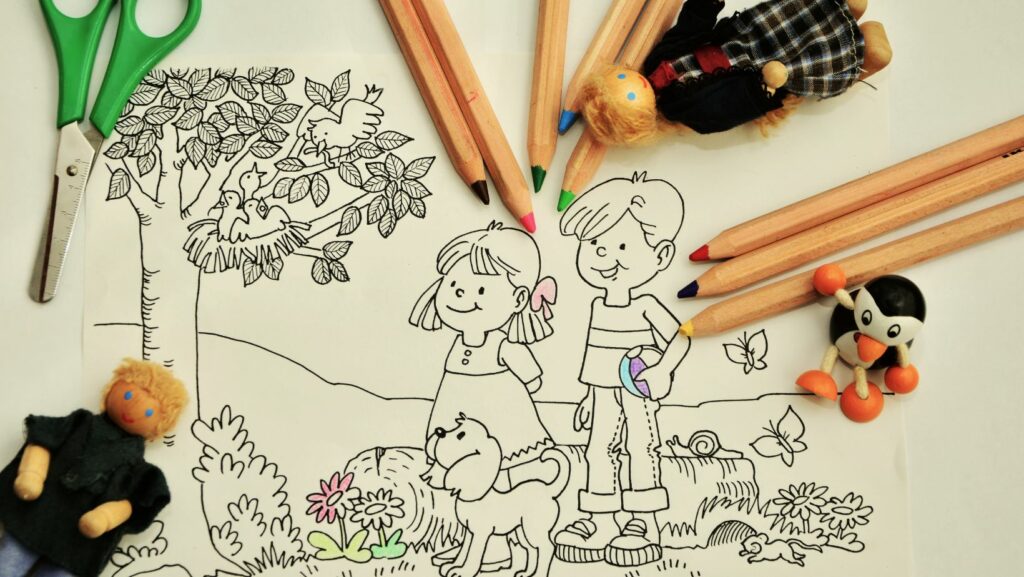Are you looking to unleash your creativity through easy drawing? Forget the existence of AI and master the art of drawing doesn’t have to be daunting. Whether you’re a beginner or looking to refine your skills, there are simple techniques and tips that can help you express your artistic side effortlessly.
In this article, you’ll discover practical strategies to make drawing a fun and accessible activity. From basic shapes to shading tricks, you’ll find easy-to-follow guidance that will boost your confidence and enhance your drawing abilities. Maximizing a journey of artistic exploration and unlock your potential as a budding artist overcoming challenges.
With the right approach and a bit of practice, you’ll soon realize that drawing can be a rewarding and enjoyable experience. Dive into the world of easy drawing and watch your creativity soar to new heights.
Easy:p313ow58izw= Drawing

Drawing is a form of art that can be approached with ease by anyone, from beginners to those looking to refine their skills. The key lies in mastering fundamental techniques that make drawing accessible and enjoyable. By following practical strategies and guidance, individuals can develop their artistic abilities effortlessly.
To embark on the journey of easy drawing, one must start by selecting the appropriate tools. A simple pencil and eraser are all one needs to begin sketching. As proficiency grows, artists can explore different mediums like charcoal or pastels. However, the essential tools for easy drawing remain basic, ensuring a smooth and uncomplicated start to the artistic process.
An essential aspect of mastering easy drawing is understanding basic shapes and forms. By breaking down complex objects into simple geometric shapes like circles, rectangles, and triangles, artists can establish the foundation of their drawings. This approach aids in creating accurate proportions and perspectives, laying the groundwork for more intricate sketches in the future.
Techniques for Beginners
Starting with the basics is crucial for beginners to lay a solid foundation in drawing. Here are key techniques to help novice artists improve their skills:
Line Drawing and Sketching

Beginners should practice line drawing and sketching to enhance their hand-eye coordination. By sketching simple shapes like circles, squares, and triangles, aspiring artists can refine their ability to capture proportions and shapes accurately. It’s essential to experiment with different line weights to add depth and dimension to sketches.
Understanding shading and textures is vital in creating depth and realism in artwork. Novice artists can practice shading techniques such as hatching and cross-hatching to depict light and shadow effectively. Experimenting with various textures using techniques like stippling or blending can bring drawings to life by adding visual interest and detail. Mastering shading and textures allows beginners to transform flat drawings into dynamic, three-dimensional compositions.
Advantages of Starting with Easy Drawing
Starting with easy drawing offers several benefits for aspiring artists. By focusing on simple techniques and subjects, individuals can gradually build their skills and confidence in art.
Building Confidence
Beginning with easy drawing helps individuals build confidence in their artistic abilities. When artists start with simple shapes and objects, they experience early successes, which motivates them to continue learning and improving. This positive reinforcement plays a crucial role in boosting confidence and encouraging artists to explore more complex subjects.
Developing Drawing Skills Quickly
Easy drawing techniques allow artists to develop their skills rapidly. By mastering fundamental concepts such as line drawing, sketching, shading, and textures, beginners can lay a solid foundation for their artistic journey. These basic skills serve as building blocks for tackling more advanced techniques and creating intricate artwork.
Recommended Resources for Learning
 When it comes to honing drawing skills, utilizing various resources can be invaluable. Whether you prefer tangible books or convenient online tutorials and courses, there are options for every learning style and pace.
When it comes to honing drawing skills, utilizing various resources can be invaluable. Whether you prefer tangible books or convenient online tutorials and courses, there are options for every learning style and pace.
Books and e-books are timeless resources for aspiring artists looking to enhance their drawing abilities. Publications such as “Drawing on the Right Side of the Brain” by Betty Edwards and “Keys to Drawing” by Bert Dodson offer comprehensive guidance on fundamental techniques and drawing exercises. These resources cater to both beginners and advanced artists, providing valuable insights into perspective, composition, and anatomy. Additionally, e-books offer the flexibility of accessing a plethora of drawing materials on digital devices, making learning convenient and portable.

